Metal baths: types, pros and cons, tips for choosing

The bath is the most important plumbing fixture in any home. This is one of the main amenities of any home. With all the current abundance of various materials and technologies, most people prefer metal baths that have been proven for centuries. They will be discussed in this article.


Peculiarities
Metal baths are prized for durability and unpretentiousness. They can withstand long-term operation and are famous for their good maintainability in case of damage and wear of the enamel. These qualities provide metal baths with a steady demand and good customer reviews.

Varieties
According to the material of manufacture, metal baths can be:
cast iron;



- steel.

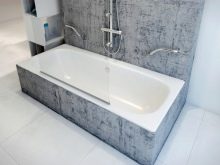

Cast iron is a heavy alloy of iron and carbon. Its baths are fantastically reliable and monumental.

Steel is a lighter alloy, resistant to loads, impacts and deformations.


For the manufacture of baths are used:
stainless steel;




- structural steel.



Stainless steel bathtubs are not in great demand due to the high price and some aesthetic inconveniences (in particular, the constant struggle with lime stains). This is an “amateur” product.
Structural steel bathtubs are the most common and popular product on the plumbing market.
Their price in the bulk is budgetary and affordable for most consumers.



Advantages and disadvantages
Let's start our review with cast iron baths. Their strengths.
- Highest reliability. They serve for decades without any serious damage. Only the enamel wears out, which is usually restored without any problems.
- They keep warm well, cool slowly. Although they warm up longer than steel ones.
- They are not afraid of treatment with caustic cleaning agents.
- Virtually silent... Do not rattle under running water when filling.




But they also have significant disadvantages, which may be decisive when choosing.
- They are very heavy. This makes their delivery and installation much more difficult.
- They cost significantly more than steel ones.
- Technological features and properties of cast iron make it possible to manufacture hot tubs of only standard shapes. This does not appeal to buyers with a creative and inventive mind.
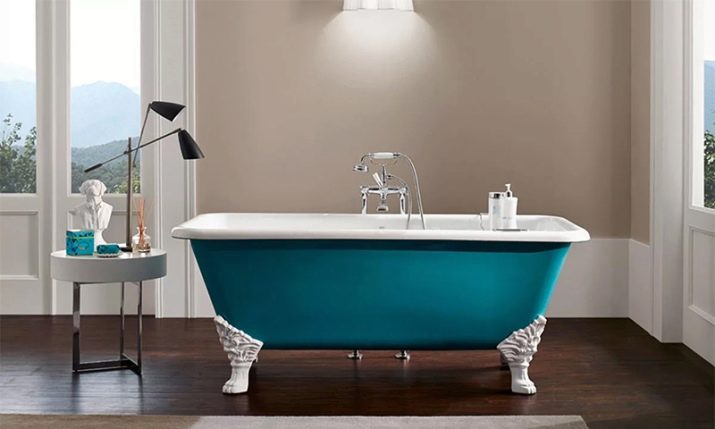
The advantages of steel baths are the exact opposite of the disadvantages of cast iron.
- Ease. In principle, one person can move and install the steel bath.
- Low price... They are affordable even for the poorest consumer.
- They warm up quickly and do not require too high a water temperature. In this case, however, it should be remembered that they also cool down faster than cast iron.
- Depending on the wishes of the customer, they can be of any shape and configuration. Steel allows any fantasy to come true.
- Strong and durable. In this they, of course, are somewhat inferior to cast iron, but with careful handling they can also serve for decades.
- Insensitive to active cleaning and disinfecting agents (except for abrasive powders).
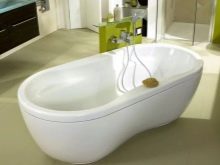


They have steel baths and two significant disadvantages.
There is a possibility of deformation and, as a result, damage to the enamel. When buying, it is recommended to pay attention to the thickness of the metal. It should be from 3 millimeters.

Noisiness. Thin walls and bottom clatter under running water when filling. Well-known methods of noise insulation will help here: covering the outer surface with expanded polyethylene, polyethylene foam, pasting with various insulating materials.


Shapes and sizes
Steel baths can be made in any shape at the request of the customer. Their manufacturing technology (in fact, hot stamping) allows you to do this.
The form can be ordered individually, which will cost significantly more, or you can use the choice provided by the stores.
The most common fonts standard rectangular shape... But there are also angular, square, oval, semicircular, drop-shaped, triangular and others. The form in this case is dictated by the imagination of the consumer and the conditions of the bathroom.
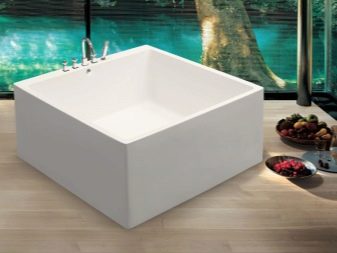



The sizes of bath bowls can be very diverse. But classic rectangular bathtubs usually come in several standard sizes: width - 70-75 centimeters, depth - 40-50.
These dimensions allow almost any person of average to relatively large build to fit in the bathtub.

As for the length, here the choice depends both on the size of the bathroom and on the individual preferences of the person. The market offers:
- short (or "sit-down") baths: 130x70, 140x70 cm;
- standard Russian: 150x70, 170x70 cm;
- standard European: 170x75, 180x70, 180x80 cm.

Russian standards are designed for the average height of a person. European standards provide a little more choice.
In recent years, baths with a length of 200 centimeters have appeared, in which even a very tall person can lie down freely.


Color solutions
Modern chemistry makes it possible to paint both the inner enamel and the outer surface of the bathtubs in different colors. Much depends on the personal preferences and taste of the buyer and the customer. Many people now strive for a uniformity of style.
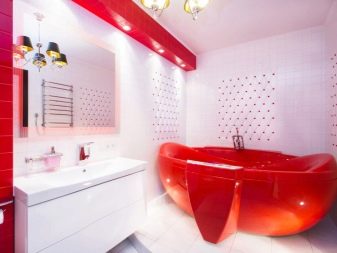



The color of the bathtub should be in harmony with the decoration of the walls of the room.
Others, on the other hand, are more attracted to defiant, catchy colors. The majority of non-spoiled consumers prefer the standard colors: white enamel and dark color of the outer surface. The market offers options in abundance for every taste and budget.



Designers give the following guidelines.
- Bathroom - the room is usually small. Dark colors will visually reduce its volume. Therefore, it is better that bright and light colors prevail in it. The color of the bath must comply with this principle.
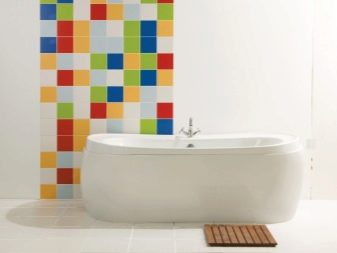

- Bathing is a pacifying process. Therefore, the colors of both the bathroom and the bath itself should not be poisonous or annoying.



- The bathroom should have good lighting, sufficient for hygiene and cosmetic procedures. The color of the walls and the color of the bathtub should emphasize this light and, if possible, enhance it.


All this leads to the idea that the optimal color of the bath is still traditional white.
For those with a different taste, it is recommended to match dark and harsh colors with the size of the bathroom and the degree of light.
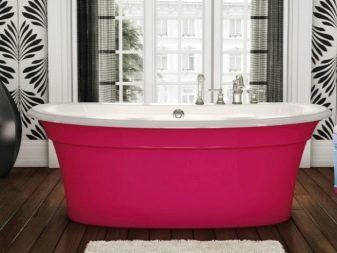

How much does it weigh?
The weight of a standard structural steel bath is 35-40 kilograms. This is a very important characteristic for bathtubs made of this material. Lighter models are more susceptible to deformation and related damage. It is recommended to ask sellers about it when buying.
The lightness of the steel bath makes it easy to install, but also requires great attention to the preparation of the surface for the supports. Accuracy is very important here, otherwise stability will be violated.

A cast iron bathtub, depending on its size, weighs 80-130 kilograms. Its delivery and installation requires the work of several people. In the conditions of cramped Soviet-style apartments, this can be very troublesome. In addition, the strength of the floor slabs should also be taken into account, because the weight of such a font with water and a bather can be simply dangerous. But the stability with this weight is ideal.
Even minor irregularities and imperfections in the floor surface will not play a significant role.

Manufacturers
German firms occupy the leading positions in the world market for metal baths Kaldewei and Bette. Their products are made in strict accordance with European standards and are distinguished by their practicality, functionality, ease of installation and everyday use. Leading companies are introducing new metalworking technologies, developing damage-resistant coatings, and taking into account the anatomical features of the human body in the development of models.


Portuguese company BLB manufactures comfortable and technologically advanced baths for a wide range of consumers. They are distinguished by their sophisticated design. The rectangular bottom provides space and comfort for the bather. Geometrically, it is designed in such a way that the water is drained without residue, almost dry.

Spanish firm Roca - a transnational corporation for the production and sale of sanitary ware. Roca factories are scattered all over the world. Roca baths, from the most basic to the most sophisticated, are made with love and care for people. It is impossible to slip on their enamel: a special anti-traumatic coating is used.

Czech company Jika has established itself as a manufacturer of reliable and inexpensive steel baths.
The products do not differ in a wide variety of models, but the price / quality ratio invariably attracts Russian consumers.
With European quality, advanced design and state-of-the-art technologies in reviews, you can often see complaints about the fasteners, the complexity of installation, and the unreliability of the enamel coating. Here, one should take into account the traditional reluctance of many buyers to thoroughly delve into the instructions, and, of course, the price segment: baths of the highest quality are quite expensive, and the Russian consumer is generally not rich.

The most famous Russian manufacturer of metal baths is the Verkh-Isetsky Metallurgical Plant. He manufactures products under the brands Reimar, Donna Vanna, Antika... The plant is constantly improving the quality of the enamel, has developed a special outer coating that increases the service life of the bathtubs, as well as noise insulation, which is applied already at the factory, and is not glued at its own expense by the consumer.
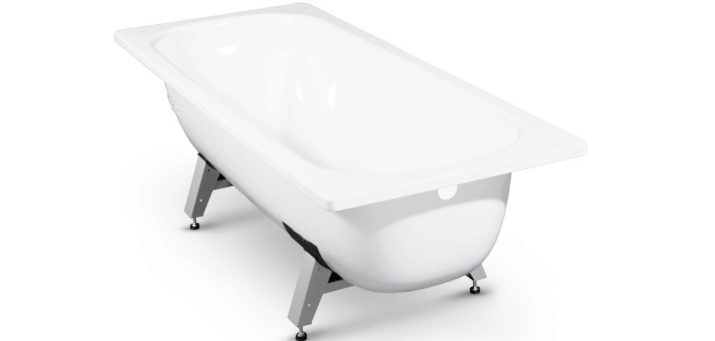
The second place of honor is occupied by one of the oldest manufacturers of sanitary ware in Russia. Santo-Holding OJSC (Lipetsk Pipeline Plant). It has been producing cast iron and steel bathtubs for 70 years.The products do not differ in particular elegance and variety, but they are quite satisfactory for consumers in terms of price.
In general, the price of domestic baths is approximately two times lower than that of baths of the lowest price category of European manufacturers. This factor is most often the determining factor.

Now the Russian market is gradually conquered by Asian companies, primarily Chinese. They offer a huge selection of a wide variety of baths at attractive prices. So far, these manufacturers do not have much confidence in the market, but they have significant prospects.

How to choose?
Summarizing all that has been said, one might think that with the current abundance and variety that the market offers us, choosing a bath is a difficult and almost impossible task. In fact, everything is much simpler. The majority of consumers are not very pretentious people, they are not rich, and the main thing for them is an acceptable ratio of price and quality. This explains the popularity of products from domestic manufacturers.
Russian baths are no better than European ones, but no worse, and most importantly, much cheaper. Therefore, analyzing the ratings of manufacturers and studying reviews on the Internet, as a rule, does not make much sense.

However, some practical recommendations can still be given.
- Pay close attention to the condition of the enamel. Chips, cracks and irregularities should not be in any case.
- Estimate the thickness of the steel sheet from which the tub is stamped. In this case, it is best to look not at the edges of the sides, but at the drain hole. You know better there. It is recommended to bring along a caliper or at least a ruler. If the sheet thickness is 3-4mm, this is acceptable. If less, then buying plumbing is not worth it.
- Ask sellers for the official characteristics of the product, where the weight of the product should be indicated. If a full-size steel bath weighs less than 35 kg, and a cast-iron bath weighs less than 80, then it probably makes sense to choose a product from another manufacturer.
- Be sure to inquire about the manufacturer's warranty obligations.
- Before purchasing, read the installation manual, evaluate the reliability of the supports and fasteners. This can be critical.

With current rising prices, relatively inexpensive metal baths have great market prospects. Those who have a major renovation in their house or just a planned replacement of plumbing should take a closer look at their rich assortment.

In the next video, you will learn how to properly soundproof a bathtub using polyurethane foam.








